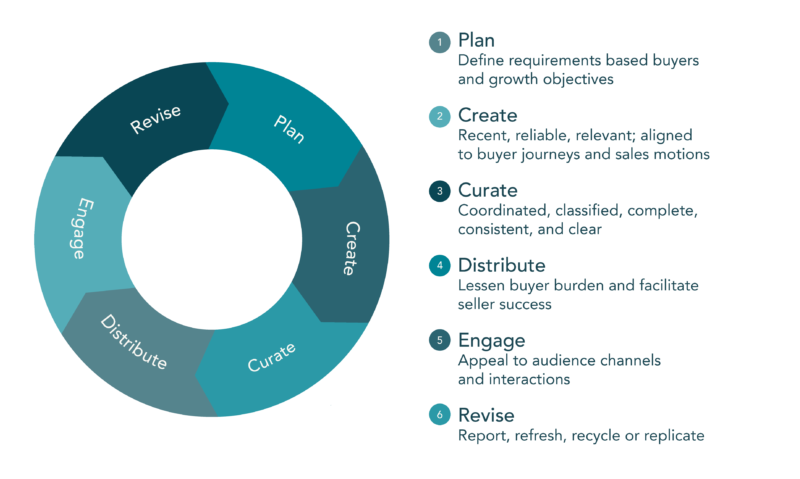From chaos to clarity: Building a scalable client-led content strategy
The key to a successful, scalable content strategy lies in relevance, not volume. By focusing on personalization and understanding your strategy maturity, you can deliver meaningful experiences that truly resonate with your audience.
Let’s be real. Many organizations still struggle with content personalization at scale. Delivering content that resonates with diverse audiences while maintaining quality and consistency means balancing volume with depth. Unfortunately, marketers are often guilty of prioritizing the former over the latter.
Our 2024 Client Buying Index research shows that 62% of buyers believe the quantity of thought leadership is increasing, and 42% say they receive an overwhelming amount of thought leadership content. No wonder almost half of buyers are using generative AI just to analyze and simplify vendor information.
This begs the question: are you adding to the noise? Are you truly creating content that speaks to individual needs while meeting your wider business objectives? Understanding your content strategy maturity level can help you identify where improvements are needed to support personalization at scale and deliver real value to customers.
How grown-up is your content strategy?
Assessing your organization’s content maturity requires radical honesty and a structured approach. This exercise provides you with a fact-based – not subjective, opinion-based – course-correct plan that systematically addresses any gaps.
As a starting point, you could ask yourself and your team questions like:
- Are we strategically planning content to align with business goals and audience needs, or just throwing ideas into the ether?
- How well are we managing and organizing content to ensure it’s up-to-date and accessible to customers and customer-facing teams?
- Are we reaching our audience through the right channels and formats? And once our content is out there, is it engaging readers and driving action?
- Do we regularly update content to keep it fresh, adapting it based on customer engagement?
If you answer “no”, “not very well” or even “I don’t know” to any of the above, you can start to see why achieving content personalization at scale is proving so difficult – and why customers are drowning in a sea of sameness.
The Momentum ITSMA Content Consideration Framework
Momentum ITSMA has developed the Content Consideration Framework to help you understand and evolve your organization’s content strategy to better align with go-to-market (GTM) motions.

The framework outlines six steps that ultimately help you move from chaos to clarity. This includes planning your content based on buyer needs and growth objectives, creating relevant content and distributing it effectively, through to revising and refreshing content based on its performance in the market.
We’re excited to launch this offering and help you focus your content strategy to outperform the competition.
In this blog series
In this blog series, I’ll explore key elements of the Momentum ITSMA Content Consideration Framework, including:
- Understanding the buyer: Is your content a one-way broadcast or a meaningful conversation borne through deep client understanding?
- Building a scalable content engine: How might a modular content library streamline creation and ensure consistency across your marketing efforts, e.g., by utilizing marketing technology?
- Empowering sales teams: How can you equip your salesforce with the tools needed for effective engagement and closing deals faster?
- Measuring and iterating: How can you track content performance and continuously refine your strategy to stay ahead?
If you’d like to know more about the framework or troubleshoot some content strategy challenges, email me tony.coppola@momentumitsma.com. I’d love to hear your thoughts.
More in
-
The great B2B marketing reset: Why your team’s skills will define your success and growth trajectory
We read about it and we hear it all the time in our conversations with our clients: B2B marketing is under pressure like never before.
-
How future-ready B2B marketing teams win: Insights from the front lines of enablement
As an L&D Director working with top global B2B marketing teams, Jo Connolly reveals why enablement is the new growth engine – and how you can close the skills gap. Discover key findings and join our webinars for actionable strategies.
-
Transforming thought leadership into a client growth lever | Forbes
Thought leadership has transformed from a brand-building exercise into a pivotal element of enterprise decision making. It’s not just about generating interest; it's about securing trust, driving differentiation, and actively influencing purchase decisions.
